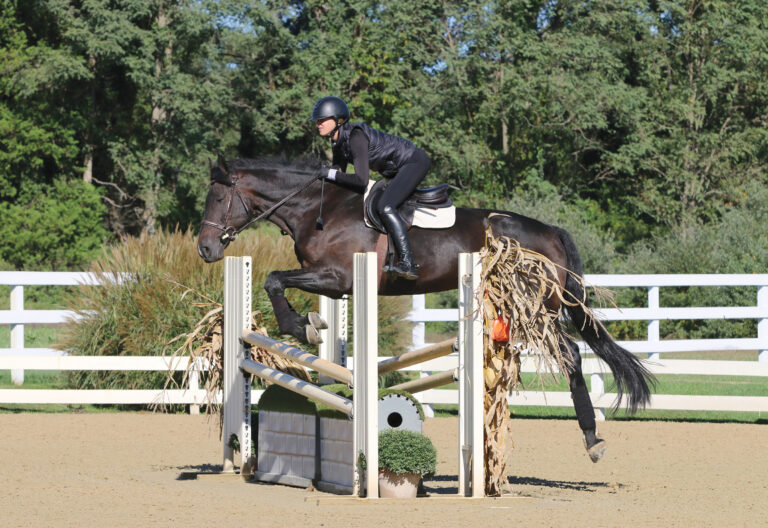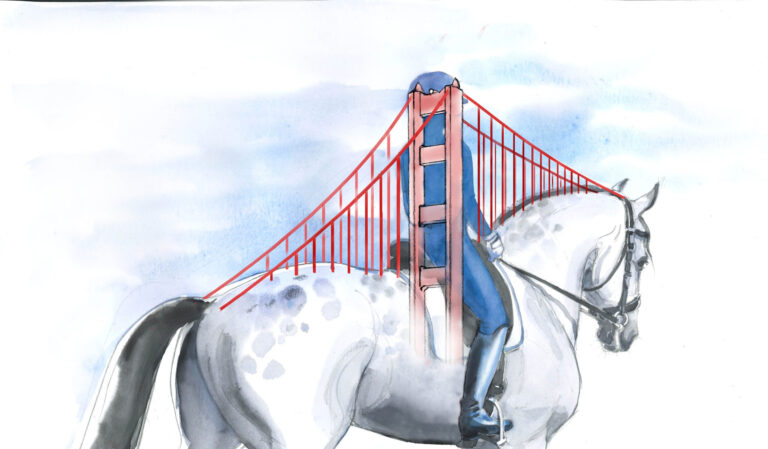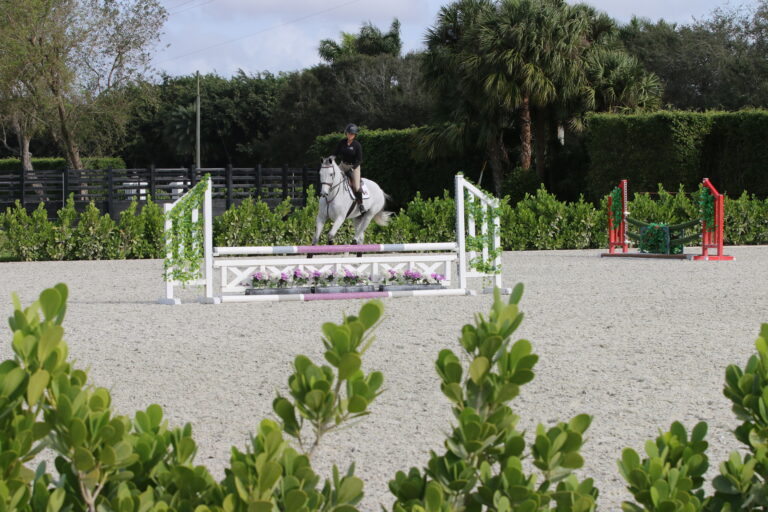Are your aids clear and independent of each other? Are you telling your horse conflicting or contradictory things at the same time? Maybe you are aware that you clash your aids but have difficulty avoiding it? Can you isolate and use different parts of your body?

If you watch a successful hunter rider such as John French navigating a course, all of their aids are soft and invisible yet extremely effective. Another great example of aids working together is grand prix rider McLain Ward. If you study him closely, you will see all the parts of his position work in concert with each other.
Riders need strong positions to use their aids effectively and independently. A rider is considered in balance when all the parts of the body coordinate correctly and work in equilibrium.
The four main parts of a rider’s position include:
• Leg—from the knee down
• Base of support—the thigh and seat
• Upper body—all parts of the body from above the seat
• Hands and arms
The All-Important Leg
I consider the leg to be the most important part of a rider’s position when it comes to solidity because it allows independence of use. The leg is the foundation of the position. It should be directly under the base of support, and the stirrup iron, which can greatly affect leg position, should be positioned so it is angled across the ball of the foot with the outside branch leading. On this subject, a pet peeve of mine is a rider leaning down looking at her foot and using her hand to reposition the stirrup. A rider should be able to move her foot at the canter if the stirrup has slipped or turned and needs to be readjusted because this could happen on course. The angle behind the knee should be about 110 degrees when jumping, and there needs to be an even distribution of contact among the calf, knee and thigh.
To gain security in the seat and tighten the legs, I recommend riding 15 minutes per day without stirrups.
On the subject of controlling the leg, you first should apply it without the spur instead of the leg and spur together. The spur is an artificial aid intended to supplement the leg. First use leg to ask the horse to go forward or move laterally. If several degrees of leg fail to get a response, then add a prick with the spur. Apply the spur instead of kicking. The spur should not be used every time the leg is used. There should be independent use of leg as well as selective use of the spur. If the spur is constantly used, the horse will become dull to it and a spur mark will occur as well.
Aids Working In Unison
The solid leg must work in unison and independently of the other parts of your position. When applying your leg aid, always use leg to hand in that order. The hand receives what the leg creates.
At a basic level, you must be able to apply your leg in varying degrees to activate the horse’s hindquarters and soften with the hand to ask him to go forward and lengthen his stride. Conversely, you need to be able to relax your leg (in degrees) and close your hand to decrease your horse’s pace and shorten his stride or stop as well as back up. Once you can do this, you can apply the same aids working together in more sophisticated degrees to ask the horse to lengthen or shorten his stride. If you use leg with no hand, your horse will simply go faster and end up on his front end. Too much hand will inhibit him from lengthening or rocking back to his hind end.
This might sound simple, however precise control of the leg is necessary. A rider who is unbalanced and lacking in coordinated use of hands and legs will not be able to do this basic exercise. For example, one of my experienced amateur riders had difficulty slowing her horse inside a line on course without raising her hands. It was a habit: The minute she steadied her horse, her hands went up. It was difficult for her to maintain her ordinarily low hands as she took a feel of her horse’s mouth.
To practice using the leg in degrees at the walk, check your position and start with ounces of leg pressure and feel the effect it has on your horse. Then do the same with your hands: Close your fingers as if squeezing a rubber ball and feel your horse slow and shorten his steps. Add leg and the gaits become more connected. Follow the same method at the trot and canter.
Some riders have trouble keeping their arms relaxed as they use their legs. The more they use their legs, the stiffer and more active they are with their entire body because they are unable to separate the use of legs and hands. Instead, they resemble a marionette’s reaction to one string being pulled and arms and legs moving at the same time. It is critical for the arms to be relaxed and move with the horse’s motion. The elbows must look like well-oiled joints.
The aids must work together while balancing the horse and bending through turns on course, especially during a lead change. In this instance, you really need to be centered and coordinated as you ask for the change, otherwise clashing of the aids could result in a confused horse and cross-canter.
This information might seem basic, but when teaching clinics, I’ve found that developing and maintaining a solid position and coordinating the use of the aids is at the root of many riders’ problems. The theory behind riding might be simple to understand—it’s just not always easy to carry out in the saddle. Improving as a rider in all of these areas is a lifelong pursuit.
About Holly Hugo-Vidal
Trainer Holly Hugo-Vidal judges and gives clinics around the country. Her mentors include Victor Hugo-Vidal and Rodney Jenkins. A successful book author, she now makes her home in Milton, Georgia.
This article originally appeared in the January 2016 issue of Practical Horseman.











